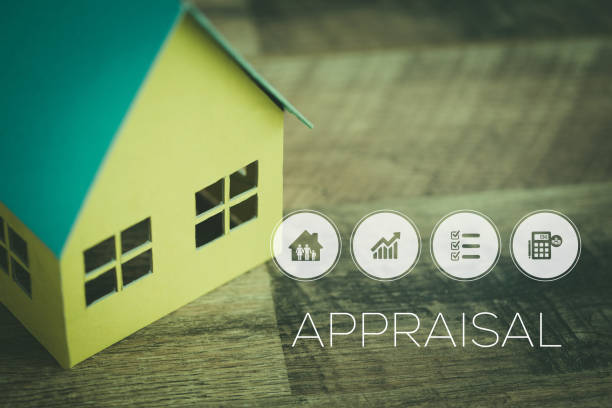Whether you’re buying, selling, refinancing a home, or investing in real estate, the appraisal process plays a vital role in determining the property’s true market value. It’s more than just assigning a price to a house—it’s a thorough analysis that ensures fairness and accuracy in property transactions. Understanding how the home appraisal process works helps you anticipate what to expect and how to navigate each stage confidently. Appraisals protect buyers from overpaying, help sellers set realistic asking prices, and assure lenders that they’re making a sound investment.
Home appraisals are often misunderstood, yet they’re among the most important steps in real estate. Without an accurate appraisal, a deal could fall apart, loans might be denied, or properties could be undervalued or overvalued. This process ensures transparency and accountability.
Understanding the Appraisal Process
At its core, the house appraisal process is an unbiased professional opinion of a home’s value, conducted by a licensed or certified appraiser. It’s used in nearly every real estate transaction involving a mortgage. The appraiser evaluates the property based on its condition, features, location, and the current market environment. The outcome is a comprehensive report that determines how much a lender is willing to finance.
This process is not a guessing game—it’s a systematic and evidence-based approach that brings together on-site evaluation, data analysis, and market insight. Appraisers are trained to eliminate bias and instead rely on facts, figures, and consistent valuation methods.

Step 1: Defining the Purpose of the Appraisal
Before starting, it’s essential to identify why the appraisal is needed. The purpose will guide the appraiser’s approach and the type of value they assess. Some common reasons include:
Home purchase: To verify the property’s market value for a mortgage loan.
Refinancing: Lenders require an appraisal to ensure the home’s current value supports the new loan.
Divorce or estate settlement: To establish equitable distribution of assets.
Tax assessment appeals: To dispute an overvaluation by local tax authorities.
Investment analysis: To evaluate profitability and risk for investors.
Different purposes may require different types of valuation, such as market value, replacement cost, or investment value. It’s important to clearly communicate the appraisal’s intent to ensure the results meet your needs.
Step 2: Selecting a Qualified Appraiser
Once the appraisal’s purpose is clear, the next step is hiring a qualified appraiser. Most lenders use third-party appraisal management companies to avoid conflicts of interest. For private appraisals, it’s important to choose someone who:
Holds proper state certification or licensure
Follows USPAP (Uniform Standards of Professional Appraisal Practice)
Has experience with similar properties in the same market area
You can also ask for referrals or check online reviews. A well-regarded appraiser not only ensures compliance with professional standards but also brings local knowledge, which is invaluable in markets with fluctuating trends.

Step 3: Gathering Relevant Property Information
Next, the appraiser collects all available data about the property, including:
Lot size and property dimensions
Number of rooms and bathrooms
Type of construction and materials used
Age of the home and condition of the structure
Renovations, upgrades, or recent maintenance
Utility availability and energy efficiency
They’ll also gather records from public databases, tax assessments, title records, and the Multiple Listing Service (MLS), all of which help form a complete picture of the property’s identity and value. Sellers or owners can also contribute by providing documentation such as permits for renovations or receipts for recent upgrades.
Step 4: Conducting the Property Inspection
With the foundational data in hand, the appraiser visits the property. This inspection is not the same as a home inspection, which focuses on functionality. The appraiser’s goal is to evaluate value-impacting features and document:
Interior and exterior condition
Quality of construction and finish
Safety or code compliance issues
Layout and design functionality
Landscaping, curb appeal, and overall aesthetics
They take photographs, sketch floor plans, and verify square footage to ensure the valuation reflects the true characteristics of the property. A well-maintained property can leave a positive impression, possibly influencing the final value.

Step 5: Analyzing Market Data and Comparable Sales
This step is critical. The appraiser examines the local real estate market to find comparable properties, or “comps,” that have sold recently. Key criteria for comps include:
Similar location (usually within 1 mile)
Similar size, age, and features
Recent sales (typically within 3-6 months)
Adjustments are made to account for any differences. For instance, if a comp has a finished basement but the subject property does not, a downward adjustment is made to the comp’s sale price. The goal is to identify a reasonable value benchmark rooted in actual market behavior.
This comparative analysis offers a reality check—how your home stacks up against others buyers are willing to purchase.
Step 6: Applying Appraisal Methods (Cost, Sales Comparison, Income)
To establish a credible value, appraisers use one or more of these valuation approaches:
1. Cost Approach
This method calculates what it would cost to rebuild the home today from scratch, subtracting depreciation and adding land value. It’s especially useful for new or unique homes where comps are scarce.
2. Sales Comparison Approach
This is the most widely used method in residential real estate. It compares the property to recent sales, making dollar adjustments for differences to arrive at a fair value.
3. Income Approach
Primarily used for rental or investment properties, this method estimates the property’s value based on the income it generates. Capitalization rates, expenses, and market rents are considered.
Using these methods, the appraiser cross-checks values and synthesizes their findings into one estimated value. In complex cases, more than one method may be used for accuracy.

Step 7: Determining the Final Appraised Value
After compiling all the data, the appraiser reconciles the findings to determine a single appraised value. This isn’t just an average of numbers; it’s a weighted decision based on the most reliable and relevant data points. The final value reflects:
The property’s physical characteristics
Recent comparable sales
Current market trends
Neighborhood dynamics
This valuation becomes the cornerstone of financing decisions, negotiations, and investment evaluations. For buyers, it validates their offer; for sellers, it confirms they’re priced right; and for lenders, it mitigates financial risk.
Step 8: Preparing and Delivering the Appraisal Report
The appraiser prepares a standardized report—often the Uniform Residential Appraisal Report (URAR)—which includes:
Legal and physical descriptions of the property
Details of the inspection and photos
Explanation of methodology used
Adjustments and comparable data
Final opinion of value
The report is delivered to the lender or client and may take several days to finalize. It serves as a legal and professional document that supports the property’s valuation.
Sometimes, the report includes notes on market trends, neighborhood conditions, or special features that might impact future resale value.

Step 9: Reviewing and Interpreting the Report
The final step is to review the appraisal report carefully. Make sure the following items are accurate:
Comparable sales used
Adjustments made
Descriptions and photos
Property characteristics and dimensions
If you notice discrepancies or believe the appraiser missed important information, you can submit additional evidence or request a reconsideration of value. A second opinion may also be requested in rare cases.
Understanding the report empowers you to make informed decisions and better negotiate real estate deals.
Conclusion
The appraisal process is a multi-step, detail-oriented procedure that plays a pivotal role in nearly every real estate transaction. It ensures that a property’s value is determined objectively and accurately, protecting buyers, sellers, and lenders alike. Whether you’re going through the home appraisal process for the first time or evaluating the house appraisal process as an investor, understanding each phase empowers you to participate in the process knowledgeably.
If you’re eager to learn more about real estate and investing, Dwanderful is an invaluable resource. Founded by real estate investor and podcast host Dwan, the site offers tools and education to help you succeed in real estate. Start with her free book, “Real Estate Lingo“, which is a fantastic guide to understanding key terminology. For those ready to take their strategy to the next level, check out Dwan’s premium book, “Five Pillars of Real Estate Investing,” a roadmap for building wealth.
Curious about your potential in the real estate world? Take Dwanderful’s fun and fast quiz game—in under a minute, discover how you could generate six figures in just six months, whether you’re buying your first property or expanding your portfolio. It’s a smart, interactive way to see how real estate can change your life. Contact us now!
Frequently Asked Questions:
What factors can cause an appraisal to come in lower than expected?
Several factors might contribute to a lower-than-expected appraisal:
Overpricing by the seller
A cooling or declining market
Dated or poorly maintained property
Unpermitted renovations
Lack of nearby comparable sales
Market saturation or high inventory
Understanding these factors can help set realistic expectations and avoid surprises.
Can I challenge or dispute an appraisal report if I disagree with the value?
Yes, you can dispute an appraisal. The most effective way is to request a Reconsideration of Value through your lender. Submit:
A written appeal
New or overlooked comparable properties
Documentation of factual errors (e.g., incorrect square footage)
In some cases, a second appraisal may be ordered, especially if there is substantial evidence the first one was flawed.
How long does the appraisal process typically take from start to finish?
Typically, the appraisal process takes between 7 to 10 business days:
Scheduling the inspection: 1-3 days
Inspection and evaluation: 1 day
Market research and report preparation: 3-5 days
Report delivery and review: 1-2 days
However, timelines can vary based on location, property complexity, and appraiser availability.


